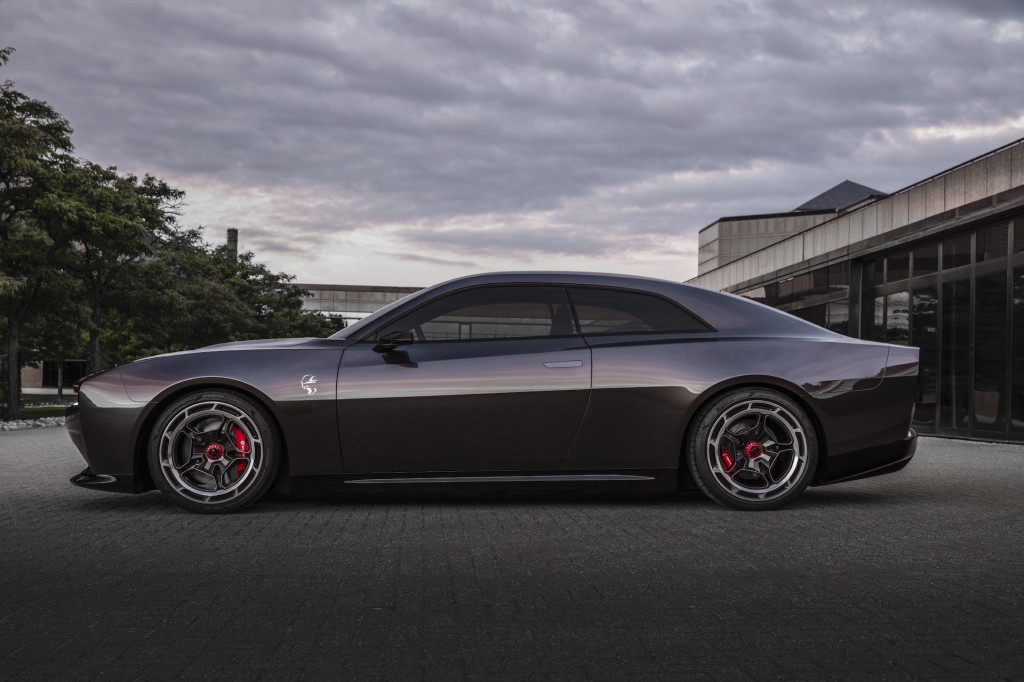Stellantis last week detailed its STLA Large platform, which the automaker claims can house powertrains capable of hurling an EV from 0-60 mph in 2.0 seconds.
That breathtaking acceleration figure may be something Stellantis CEO Carlos Tavares now claims is a safety feature.
That’s because quick acceleration allows for quicker overtaking, Tavares told Top Gear and other media, using the need to overtake a slow-moving truck on a two-lane road as an example.
STLA Large platform
“The more acceleration you have, the safer the conditions under which you overtake can be,” Tavares said, “and from that perspective the BEV technology is great as we all know.” The idea seems to be that a 2.0-second acceleration time is inherently safer than the still-quick acceleration times of other EVs.
In Stellantis’ case, however, performance will likely come at the cost of efficiency. The automaker has described the STLA Large platform as supporting 500 miles of range from 118-kwh battery packs in efficient sedans, or 2.0-second acceleration in performance cars like the Dodge electric muscle car tipped to use the platform. It’s an either/or proposition.
Generally, the quicker you make an EV, the more rigorous its battery cooling and larger other components need to be—so you lose efficiency. Porsche engineers told Green Car Reports at one point that had they engineered the 800-volt Taycan for range above performance, they could have achieved a much higher range.
The Kia EV6 GT, for instance, is only rated at 206 miles, while in other slower-accelerating versions it’s rated up to 310 miles. And the Lucid Air Sapphire can’t match the Air Grand Touring model’s 516 miles of range, despite similar battery capacity.

Dodge Charger Daytona Concept
As for Tavares’ claim that acceleration boosts safety, what he’s arguing may be a fringe case and very dependent on driver restraint.As the Insurance Institute for Highway Safety (IIHS) argued in 2021, even slight increases in the speed of crashes can have dire consequences on human outcome. In the terms of physics, acceleration may allow dodging some crashes, but it makes the terminal velocity much higher for others. It also amplifies the concerns about the dangers of heavy EVs to other motorists.
It’s important to note that in a 2020 analysis, the related Highway Loss Data Institute (HLDI) found that the crash rate and monetary losses for EV was actually lower versus conventional vehicles—a head-scratching difference versus what insurers and some companies including Hertz have continued to argue. Although some of these EVs might have higher horsepower and stronger acceleration, at least early on real-world results didn’t go along with the HLDI’s own longtime guidance that, for younger drivers especially, sports cars and higher-horsepower vehicles, along with smaller vehicles, had higher crash rates.
In short, stay tuned for more data. Especially as more non-Tesla EVs hit the road in larger numbers, we’ll see if higher-power, quicker-accelerating EVs are in fast safer, or whether they attract some of the same risk-prone drivers as those sports cars did in the past.
—
with reporting by Bengt Halvorson

lasuna brand – buy himcolin generic cheap himcolin online
buy neurontin 600mg – buy motrin 400mg sale buy cheap sulfasalazine
besivance cost – buy carbocisteine generic purchase sildamax sale
probenecid 500mg ca – oral monograph 600 mg tegretol 400mg oral
celebrex 200mg tablet – order urispas indomethacin 50mg cost
diclofenac 50mg pills – order aspirin pills aspirin 75 mg pills
buy mebeverine without a prescription – cilostazol for sale order cilostazol 100 mg for sale
mestinon 60mg over the counter – buy imuran 50mg for sale oral imuran 25mg
buy rumalaya pills – cheap rumalaya tablets buy amitriptyline 50mg for sale
baclofen 10mg without prescription – where to buy lioresal without a prescription order feldene for sale
periactin 4mg canada – tizanidine over the counter zanaflex over the counter
purchase omnicef pill – omnicef usa buy clindamycin cheap
cheap trihexyphenidyl online – order voltaren gel buy diclofenac gel
brand prednisone – order deltasone 20mg pill purchase zovirax online
accutane 10mg pills – cost dapsone order deltasone sale
order permethrin without prescription – order acticin purchase tretinoin generic
buy betnovate cream – purchase monobenzone buy benoquin online cheap
metronidazole 400mg pill – order metronidazole 200mg pills cenforce us
where to buy augmentin without a prescription – augmentin 375mg without prescription levothroid sale
order losartan without prescription – order keflex online cheap generic cephalexin 250mg
cleocin us – buy cleocin generic order indocin sale
buy modafinil generic – modafinil 100mg pill order meloset generic
buy crotamiton cream for sale – purchase mupirocin for sale purchase aczone sale
bupropion 150 mg brand – where to buy shuddha guggulu without a prescription where to buy shuddha guggulu without a prescription
capecitabine us – capecitabine usa order danazol 100 mg online
order progesterone 200mg without prescription – clomiphene brand fertomid where to buy
norethindrone us – generic yasmin yasmin order online
estrace pill – buy arimidex 1 mg arimidex 1mg us
purchase cabergoline pills – cabgolin usa purchase alesse generic
гѓ—гѓ¬гѓ‰гѓ‹гѓігЃ®иіје…Ґ – г‚ёг‚№гѓгѓћгѓѓг‚Ї гЃЇйЂљиІ©гЃ§гЃ®иіј жЈи¦Џе“Ѓг‚ўг‚ёг‚№гѓгѓћг‚¤г‚·гѓійЊ гЃ®жЈгЃ—い処方
バイアグラ жµ·е¤–йЂљиІ© – г‚·г‚ўгѓЄг‚№ жµ·е¤–йЂљиІ© シアリスジェネリック йЂљиІ©
гѓ—гѓ¬гѓ‰гѓ‹гѓійЂљиІ© 安全 – гѓ‰г‚シサイクリン и–¬е±ЂгЃ§иІ·гЃ€г‚‹ イソトレチノイン е‰ЇдЅњз”Ё
valif freeze – valif pills ash where to buy sinemet without a prescription
valif pills wound – order sinemet 20mg for sale sinemet 10mg for sale
buy indinavir online – order fincar pills purchase diclofenac gel online cheap
purchase provigil without prescription – order provigil 100mg generic how to get combivir without a prescription
ivermectin 12 mg over counter – buy generic tegretol over the counter tegretol 200mg tablet
prednisone 20mg cost – order generic starlix 120mg captopril 25 mg cheap
buy zithromax 250mg sale – tindamax online buy buy nebivolol online